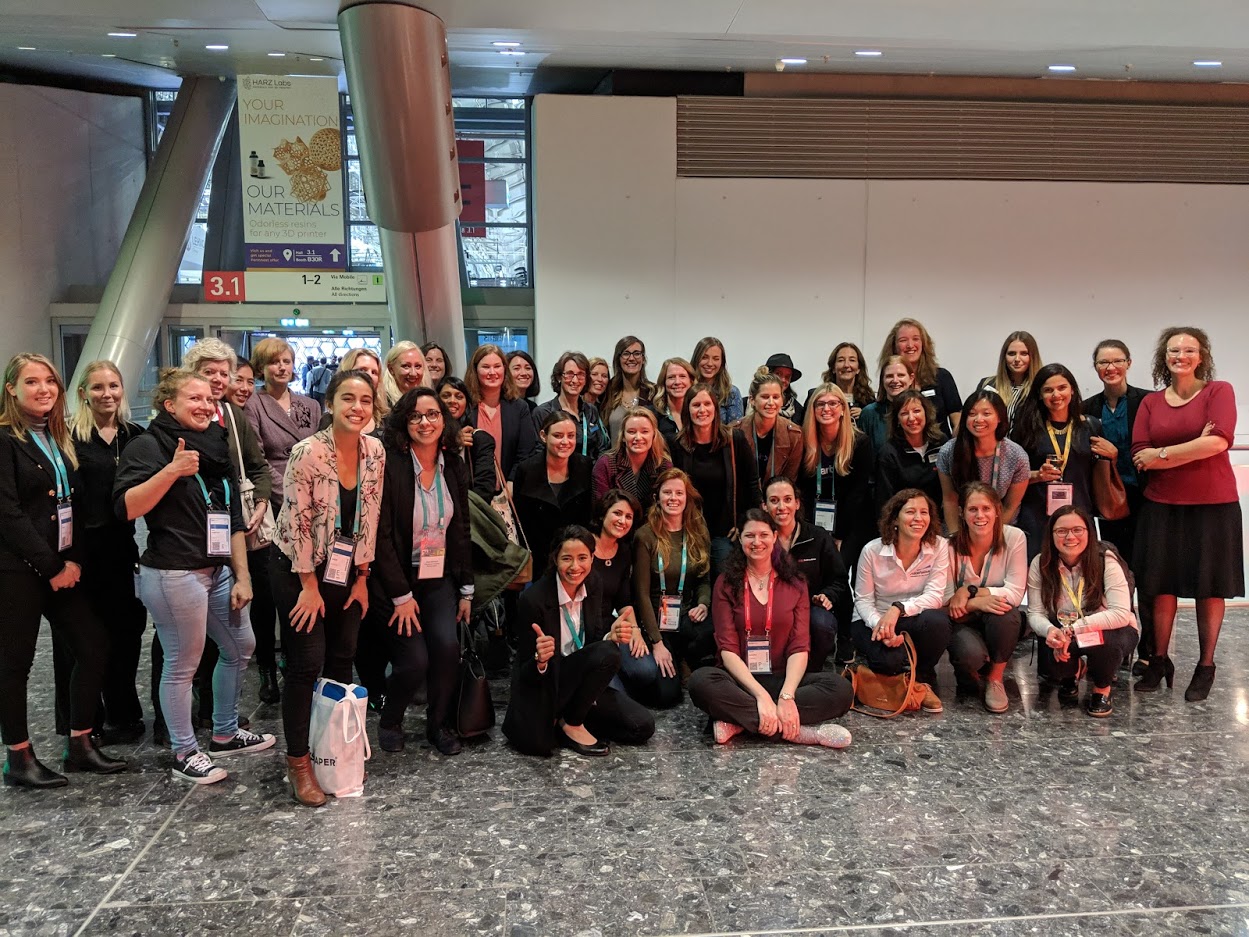![Safe to say there are definitely women in this industry: the Women in 3D Printing networking event at formnext 2018 drew a healthy crowd [Image: Fabbaloo]](https://fabbaloo.com/wp-content/uploads/2020/05/wi3dp_img_5eb09d2056e1e.jpg)
We’re still seeing tech conferences with few or no women or minorities delivering keynotes.
Without naming names, I’ve been looking at a few upcoming conferences’ speaker lists and I’m so disappointed.
Keynote speakers tend to be a big draw for events: come listen to this leader in their field share experiences. It’s a great opportunity to hear from some of the who’s who in industry. In 3D printing, they’re definitely something to look forward to, as this field is rapidly growing and changing
Software, hardware, materials, research, applications, trends, analysis: when it comes to additive manufacturing, the topic lists can be quite expansive. But the speaker lists aren’t.
A few caveats. Most keynote speakers do a fantastic job; it’s not my intent to slam them or suggest they lack in expertise or presentational value. Many events have also been making visible efforts to include more variation in who’s speaking. Kudos to them, and kudos to those who have been sharing their experiences with audiences. It’s no small thing to be billed as a keynote.
But I’m starting to think of skipping sessions where there aren’t a more diverse billing of speakers. If an event doesn’t miss a woman on stage, surely they won’t miss one more from the audience.
In working on the soon-to-be-released next Diversity for Additive Manufacturing report for Women in 3D Printing recently, I was reflecting on some of this. And as I get ready to pack up for an event, it remains on my mind.
How can we get more women onstage, and more people of color? Some say that the speakers available or referred to them just happen to be white men, and they’re the best fit for a given event, or that women from these companies can’t fit the event into their schedules. And, again, these speakers are doing a great job with great experience to back them up.
They are not the only speakers, though. They are not the only experienced individuals.
When I was talking with Nora Toure about why she founded Women in 3D Printing, she said she did so because it seemed like a nice side project. She thought she already knew all the women in the industry, so interviewing them and sharing their perspectives wouldn’t be such a big undertaking. Four years and more than 150 weekly interviews later, that’s clearly not the case. There’s a major queue of women awaiting feature, as more and more recommendations come in all the time.
The women are there. A whole global network of women are already there. And more are entering the industry all the time. Sometimes, yes, you still have to look, but they’re there.
Last year one of the tech year’s biggest events, CES, once again didn’t have any women on their keynote agenda. Not. One. Not until there was significant pressure, and then two were added. That tech show in particular has a troubled history (and still troubled present) when it comes to gender bias.
Perhaps reflecting my own bias, I expect better from 3D printing-specific events. This industry has a long way to go to reach gender parity, but it’s hard to have the “old boys’ club” in such a young industry. The mentality within 3D printing is so open and welcoming, and it’s heartening to see the workforce growing into a thriving, diverse picture of employment as more people come into the field.
I’m just frustrated that speaker lineups are so often still a game of spot-the-woman, or that some events touting diverse speakers tend to have these diverse speakers speaking only on a panel about diversity.
Kudos to event organizers who are aware of their lineups and make the effort to be more inclusive. Women in 3D Printing is among those maintaining a database of available speakers; if you’re not sure where to find qualified speakers, that’s a good starting resource.
And women in the industry: speak up, too. Literally. Share your knowledge. I’m trying to follow my own advice, and have been speaking at several events from Taipei to Boston; I’ll be keynoting next month at the Northeast Ohio Additive Manufacturing Cluster’s meeting.











The fate of major 3D printing conferences in 2020 is unclear with the ongoing virus outbreak. We have thoughts on what it could mean.